Note: This is a guest post by Michelle Urban, owner of Marketing 261 and former senior director of marketing at Layer.
In the summer of 2016, I helped Layer‚ a business conversation platform‚ launch an inbound campaign that blew up on Product Hunt and social media, driving 3,500 leads in 30 days for our sales team.
At the time, it was an increase of 2,000% over our previous lead generation efforts.
Sounds awesome, right?
Well, let me tell you what really happened during this campaign‚ the good, the bad, and the ugly.
Note: Leadfeeder, shows you what companies are visiting your website, before they fill out any lead forms. Get a full view into what accounts are visiting your website in 30 minutes or less.
Are You Sure It’s Leads You’re After?
There were plenty of quick wins to be had.
A big spike in website traffic:
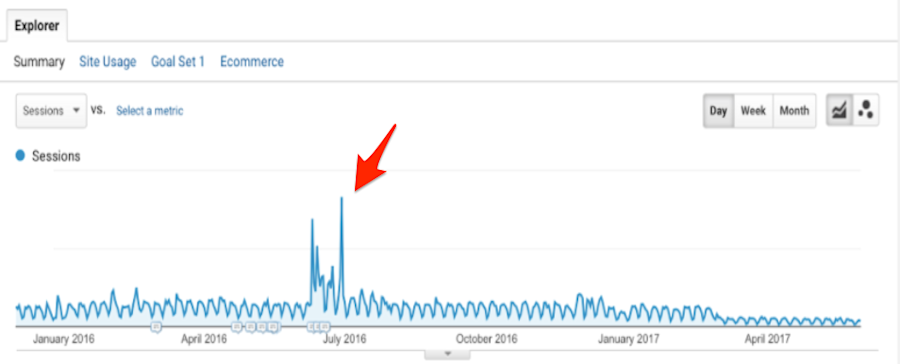
The social engagements:
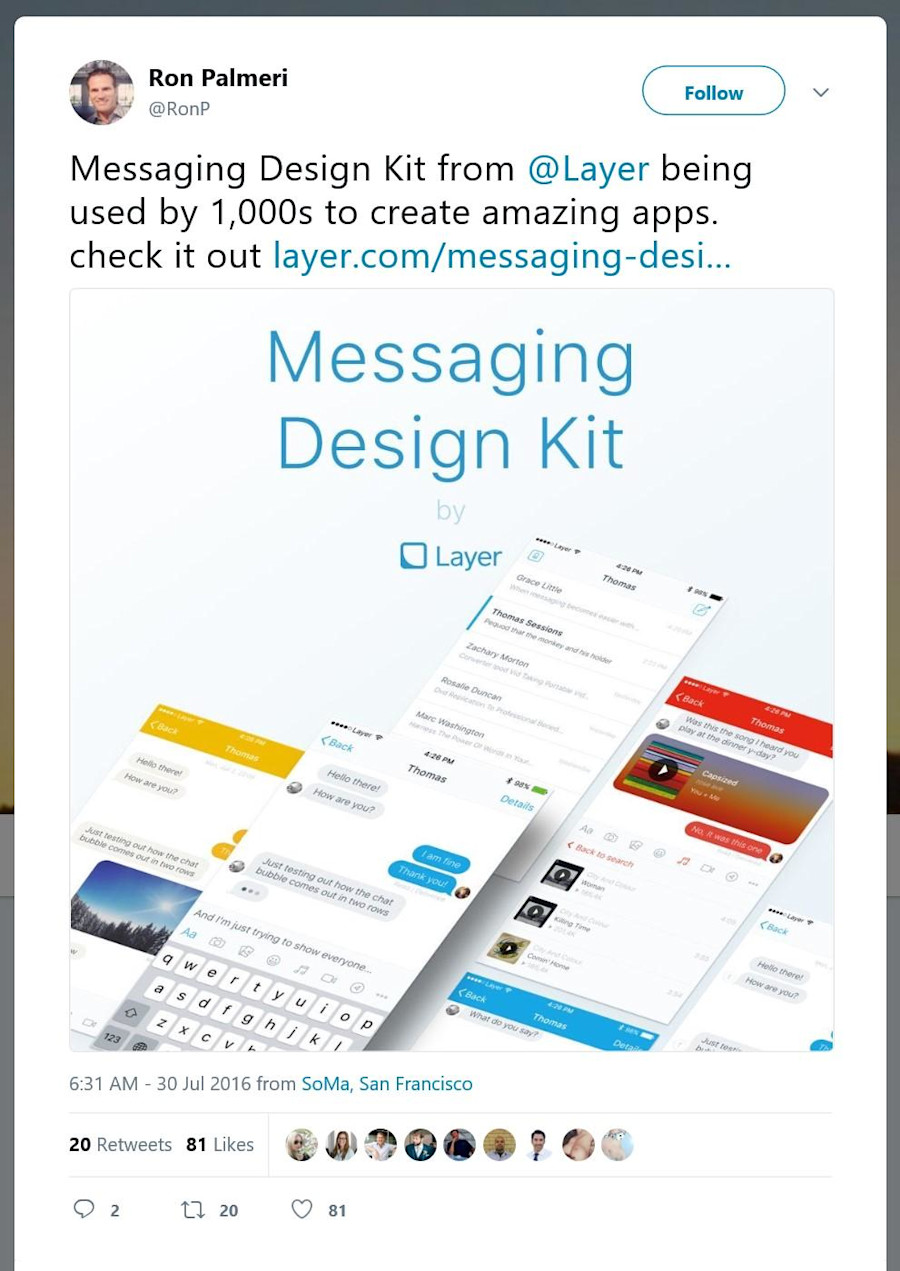
More love on Product Hunt than we knew what to do with:
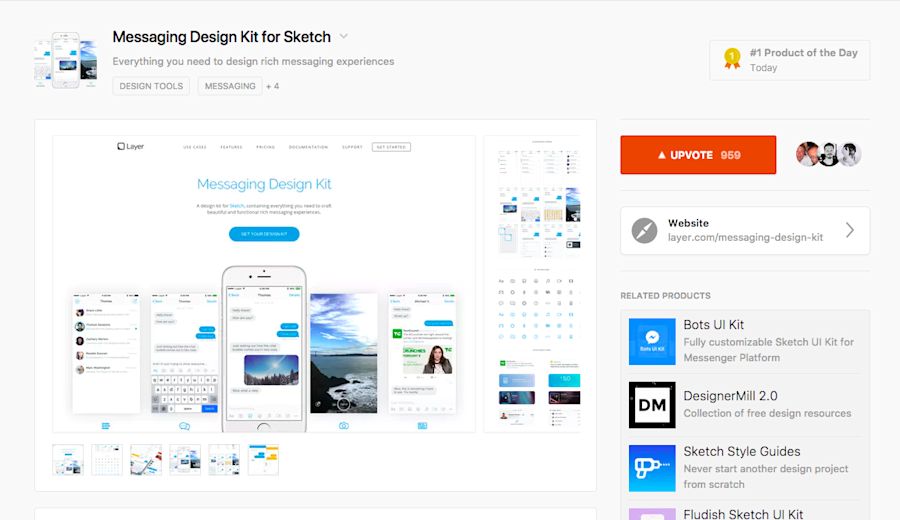
And not to mention the publication pickups, numerous backlinks, and referrals.
We even had leads‚ a whole lot of them:
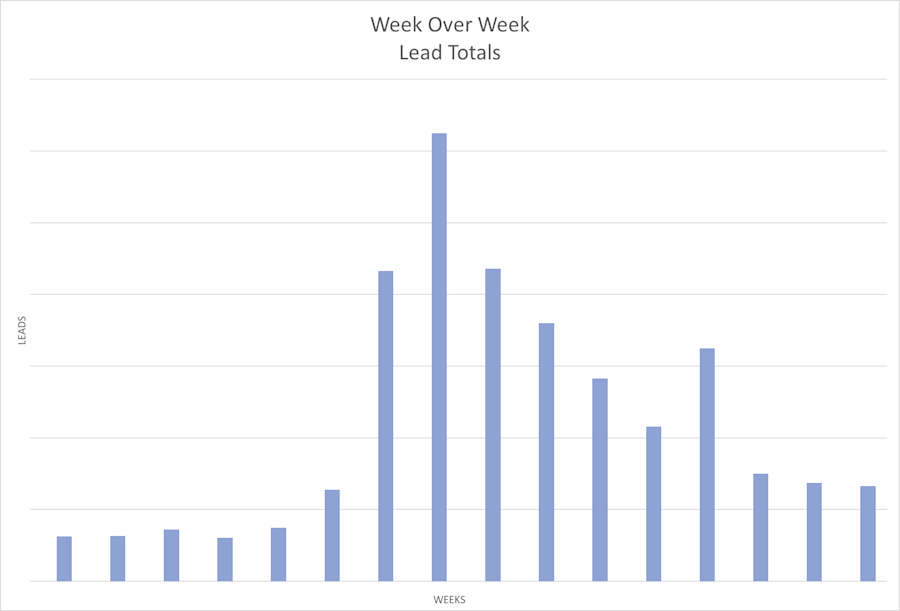
We received 3,500 leads in 30 days. Sales had so many leads they had a hard time keeping up.
Since the goal of this campaign was to drive leads, it looked like an easy win.
But it wasn’t…
As it turned out, the quality of the leads we created was anything but stellar.
Lesson #1: If your marketing goal is to track leads generated, it’s time to rethink your metrics.
Think customers, think revenue, but don’t just think “Leads!”
Because here’s the truth‚
As we learned in this campaign, generating a “lead” for your sales team is not always a good thing.
The Campaign That Drove a 2,000% Increase in Leads
Taking a step back, this is what drove thousands of leads for our sales team, the Messaging Design Kit.

It was a downloadable design kit that contained 20 wireframe and fully-rendered messaging views, 84 vector icons, and 30 rich media cards.
These are all the design assets designers and UX teams need to have in their toolkit when building a rich messaging experience for web and mobile apps (think dating apps, communities, marketplaces, on-demand services, games, commerce, etc.).
What made this asset so successful:
Agnostic Asset: All elements of the kit could be used within our product or indepently‚ hours and hours of work on design was now available in one download
Built in Sketch: A Mac design application that is often used instead of PhotoShop for UX, web design, mobile, and even icon design
When You Launch It, You Hope People Will Come
Since the goal of this launch was to drive leads, we put the kit behind an opt-in form, and we built all the necessary supporting assets (landing page, auto thank you email, blog post, etc.).
From there, we launched the kit on Product Hunt and promoted it on Twitter and elsewhere.
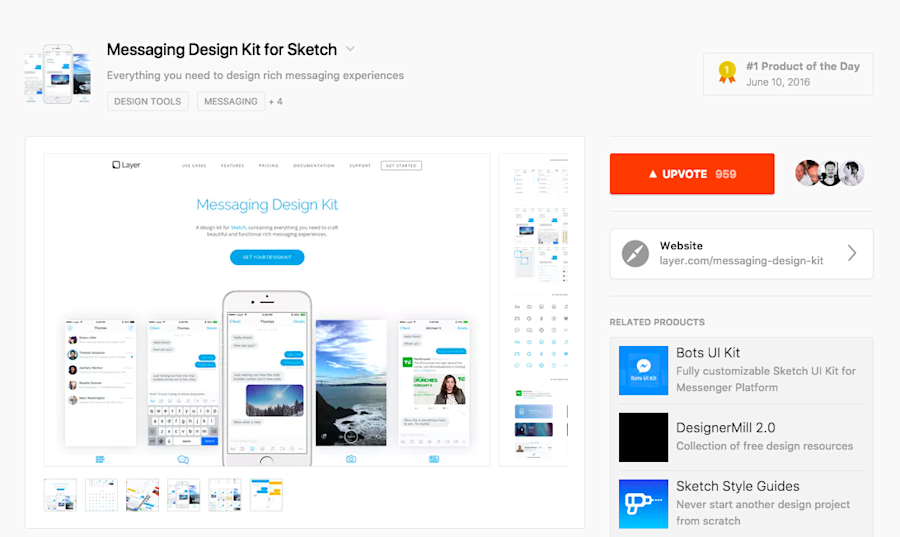
We had no clue how Product Hunt was going to work in terms of awareness and lead generation, but we had a well laid out plan for further distribution and promotion. The early initiatives were pretty traditional:
Promote to Reddit, HackerNews, Facebook Groups, Slack Groups, Design Communities
Influencer outreach for additional engagement
Publication/Media outreach for greater coverage
Facebook sponsored posts
Retargeting
Within hours, that plan was halted as we began seeing a large volume of leads (more on that below). Keeping up with the social engagements and comments needed extra attention and time.
Fast forward a bit, and‚ no doubt about it‚ the Product Hunt launch was a success on its own:
Number 1 Product for that day on Product Hunt
959 upvotes and 55 comments since the launch
A 100%+ increase in Layer’s web traffic during the first 30 days after launch
A 2,000% increase in lead volume from the previous quarter
3,500 leads in the first 30 days
More than 10,000 downloads (and still counting!)
With such great metrics, what exactly was the problem? Why wasn’t this a complete and total success?
You’re Only as Good as Your Best Lead
In the first few days after we launched the kit, our sales team was thrilled to have all these leads being assigned to them.
They thought: “Marketing is finally doing its job!”
But, after following up with a few of the leads they’d been assigned, our sales reps started to realize that a lot of the leads they were calling were a long way from sales-ready.
You know how people are always saying, “quality over quantity?” Well, it certainly rang true during this campaign.
Don’t get me wrong‚ this campaign was successful in several important ways.
We saw a huge uptick in website traffic, big engagement wins on social media, and there were leads our amazing sales team worked into opportunities and deals won.
With that said, there are some things we would absolutely do differently to ensure sales was getting the best-in-class leads. Here’s my re-do list:
1. Put different leads into different nurturing tracks
Our design kit attracted a ton of attention from web designers and UX professionals. But, in our sales process, web designers and UX pros are usually influencers in the purchase decision, not decision makers (which are product strategists, VP of product, product development, innovation specialists).
In other words, we launched a campaign that was not 100% geared to the top of the funnel audience. As a result, the flood of leads we sent to our sales team still needed a lot of work before they became sales opportunities.
If you are going to run a campaign to a persona other than the decision maker (highly encouraged!), make sure everyone knows that and plan the goals, the buyer’s journey, nurturing, and messaging around that.
My re-do: Put different leads into different nurturing tracks. One track would have sales-ready leads and would be owned by sales. The other track would have leads that weren’t yet sales ready‚ so we could nurture them along in the sales journey. I also would have considered running the entire campaign ungated, then using cookies to run a retargeting campaign featuring a more Layer-specific gated asset.
The takeaway: Develop personas, understand their buyer journeys, and map content to the different stages of the journeys. This all contributes to content marketing success. You can’t have one without the other.
2. Give sales a detailed tutorial highlighting the kit’s value and benefits
One mistake we corrected quickly was a misalignment between marketing and sales.
When we launched, we had not briefed the sales team like we should have. We also didn’t have a custom follow-up sequence in place for them to use when responding to leads from the campaign (email templates, call scripts, briefing docs, etc).
So, when our sales team began sending follow-up messages, they responded with their standard follow-up sequence‚ they welcomed the person to Layer, then gave them tips for getting started with our product.
Which, of course, made no sense at all to the people who downloaded the design kit, not signed up for the product.
It all happened because we‚ marketing‚ failed to align our efforts with sales before we launched the campaign.
It’s not just about telling sales what’s coming up. It’s about educating them on the features and benefits and how it all fits into the buyer’s journey‚ how sales should approach and communicate to this persona.
My re-do: I would meet with everyone affected well before launching the campaign, especially sales. Together, we’d review the launch from awareness to download to follow up. The creators of the Messaging Design Kit would give a detailed tutorial of the kit highlighting the value and benefits of each component. Jointly, sales and marketing would create a follow-up sequence that matched the campaign and was designed to lead prospects down the path to a potential purchase.
The takeaway: Communication and alignment is key to success. All stakeholders need to be aware of what’s happening and agree on the direction.
3. Create all nurturing paths BEFORE the launch
Of the 3,500 people who downloaded the design kit, we still had thousands of leads that hadn’t converted into opportunities 30 days after we launched.
The problem? We had no plan what to do with the unqualified leads. There was no nurturing strategy to turn these people into sales-ready leads.
We should have created a nurturing path for the designers who downloaded our kit‚ a way for us to introduce our product to them.
From there, we could have followed up to see if we could get an “in” to the marketing audience we wanted to reach.
My re-do: Create a follow-up plan for all leads that were not (yet) sales-ready when they downloaded the design kit.
The takeaway: No lead left behind. Nurturing leads is as much of a challenge as creating leads in the first place.
4. Focus on revenue-related metrics like qualified leads and closing ratio
I see so many articles that blast a headline like: “How to Generate 100,000 Leads in 12 Days (or LESS!!).”
We all want leads. It’s what we measure. It’s what our bosses ask us about. It’s what investors and board members want to know when they ask about the effectiveness of the marketing team.
But “leads” is an empty vanity metric. As the flood of leads generated by our branding kit shows, you can drive a huge number of leads to the sales team‚ and have a huge number of those leads fail to generate revenue for your company.
In hindsight, we should have done a better job tracking “qualified leads,” not just the total number of leads we were driving to sales.
My re-do: Focus more on qualified leads, closing ratio, and other revenue-related metrics.
The takeaway: “Leads” (by itself) is an incomplete metric for measuring the success of marketing campaigns. In reality, revenue is the only metric that really matters.
5. Let marketers be marketers
The most challenging part of this campaign for me was that I was given the Messaging Design Kit to launch on my very first day on the job. So, the strategy and plan was all developed by someone else in the company.
FYI: I was the first hire in marketing; there had been no other marketers running this campaign initiative.
Since I’d done dozens of similar projects in my career, I was eager to jump in and push the project forward.
The problem?
Non-marketers think about all the logistics that go into launching a campaign: target audiences, conversions, qualifications, nurturing paths, sales alignment, proper reporting, and all the other small nuances that come with an asset as important as the Messaging Design Kit.
Because of that, the strategy and plan were not really designed to do everything it could have to handoff sales qualified leads to sales.
My re-do: The designers at Layer are top-notch, and I would work with them again in a heartbeat. But, they are not marketers and have little experience of launching a campaign from start to finish. As eager as I was to push this forward as much as the next person at Layer, I should have delayed the campaign by a week or two and spent time revamping the strategy and improving the plan to ensure sales was getting only the best leads.
The takeaway: Don’t let internal pressure cause you to create a project that won’t be as successful as it could be. Marketing has to have the power to say no.
Revenue Always Wins
To close, I want to reiterate the thing I said earlier‚
Revenue is what matters‚ nothing else.
Your job is not to generate a huge number of “leads” so you’ll look good to your boss. Your job as a marketer is to support your sales team. The next time you sit down to design a marketing campaign, start by asking yourself these two question:
How will this campaign drive revenue for the company?
How will this campaign support our sales initiatives?
By starting there, you’ll have a much better chance of achieving the one thing that really matters…
Driving revenue.
More leads, no forms.
Sounds too good to be true? It’s not. Identify companies already visiting your website and turn them into qualified leads to fuel your sales pipeline.
Show me how



